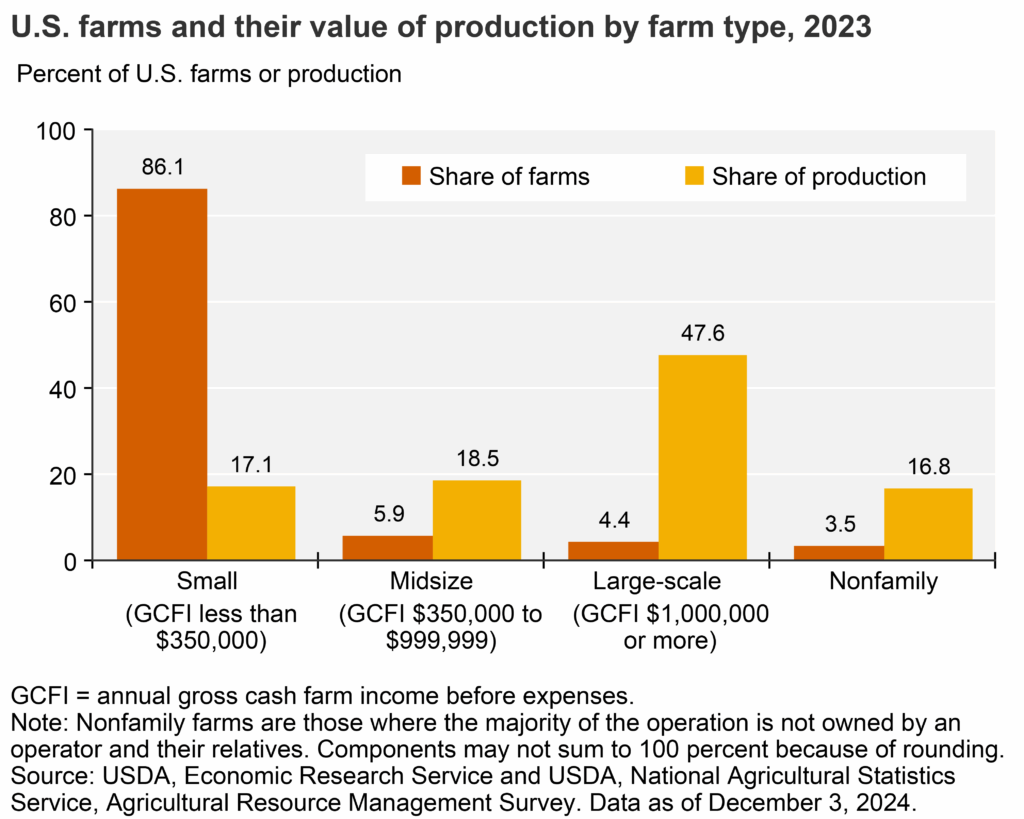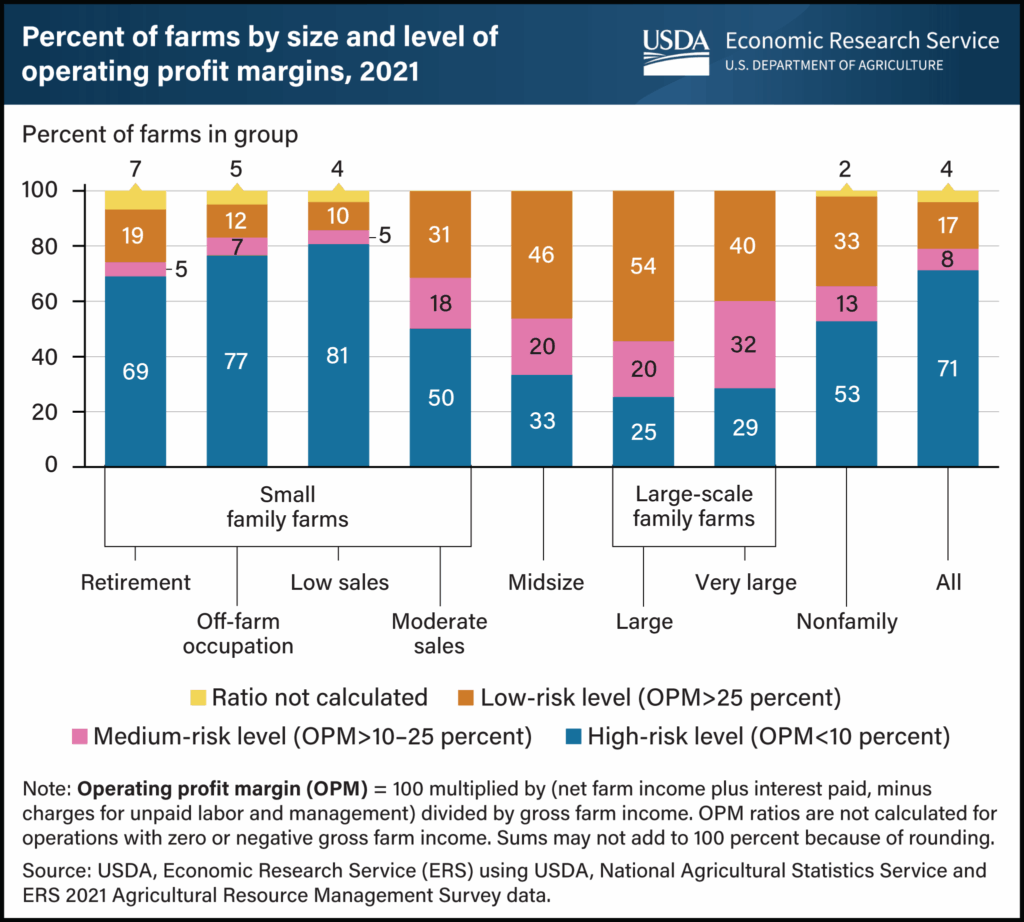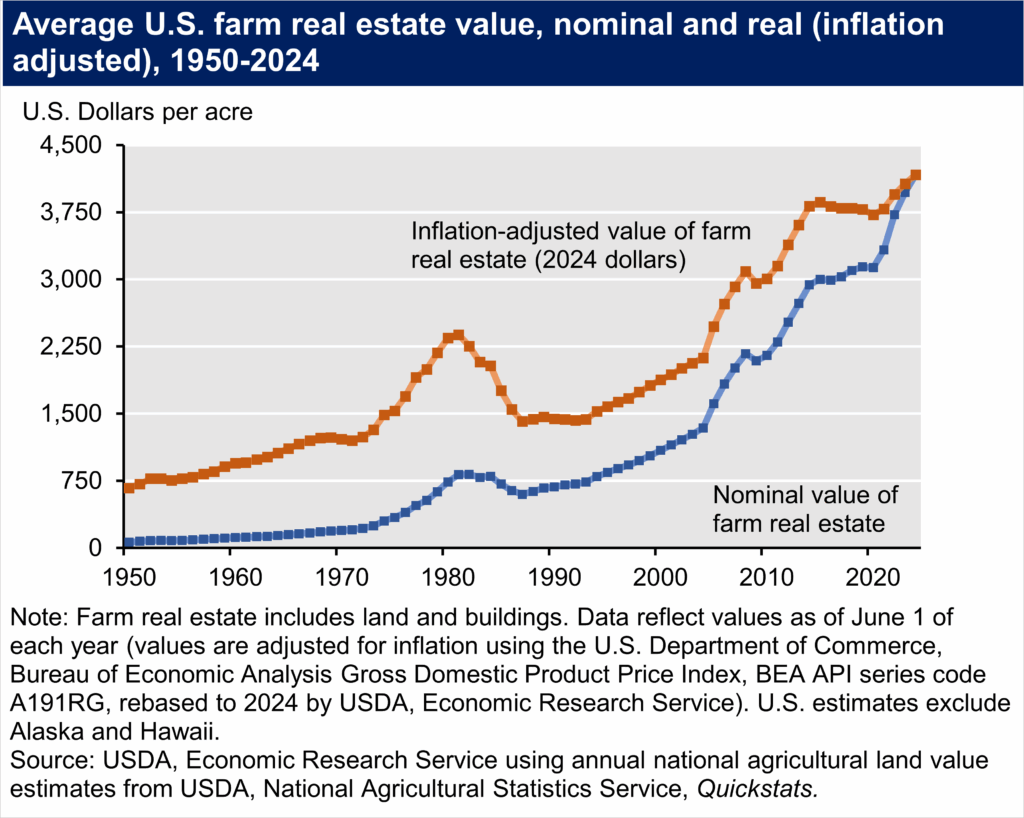Small farms have long been part of our cultural imagination. They’re not just providers of local food. They represent tradition, stability, and self-sufficiency. People dream of quitting their jobs and working the land, but is small farming profitable or not? “It depends” is an unsatisfying answer, but farming is not for the faint of heart.
The Economic Landscape
The U.S. Department of Agriculture (USDA) defines a small farm as an agricultural operation with a gross cash farm income of less than $350,000. That’s about 90% of the farms in the United States. Unfortunately, about 50% of these operations run at a net loss. That’s probably why so many small farm households rely on off-farm income to make ends meet. But what’s driving the distress?
Economy of Scale
Economy of scale is one of the main limitations. Large farms can buy inputs like seeds, fertilizer, and equipment in bulk. This provides greater purchasing power and a lower cost per acre. Large farms can also afford new technologies that promote efficiency and productivity. By contrast, small farms often operate with limited equipment and capital.
Market Pressure
Small farmers also face market pressures. Prices for commodities like corn, soybeans, milk, and wheat are set on global markets and can be extremely volatile. A bumper crop in another country or a dip in international demand can drive down prices, often below the cost of production. Large farms might be able to weather these downturns, but small farms often cannot. For example, a large farm with multiple silos can store its harvest and wait for more favorable market conditions before selling its crop.
Bargaining Power
In addition, small farms usually lack the bargaining power to negotiate favorable prices from retailers and distributors. The rise of supermarket chains, big-box stores, and vertically integrated agribusinesses have further squeezed profit margins. Consolidations across the supply chain, such as in meat packing, have put small operations at a disadvantage.

Government Policy
Federal subsidies and crop insurance programs favor large-scale commodity production. Small farms can leverage the USDA’s Environmental Quality Incentives Program (EQIP) or Farm Service Agency loans, but these programs are difficult to navigate. Plus, regulations to ensure food safety, environmental protection, and labor standards impose disproportionately high costs on small farms.
Land Access
Farmland prices are rising, and that makes it more difficult for young or aspiring farmers to start off. Renting land is an option, but long-term viability depends on land ownership. Without equity, it’s hard to invest in soil health, infrastructure, or long-term planning. Land trusts can offer affordable leases or conservation easements, but they come with restrictions on land use.
Labor and Lifestyle
Small farming is labor-intensive, especially for operations that value environmental sustainability. With limited mechanization, much of the work is done by hand. Small farmers often work long hours with few days off. They face uncertainty from weather, pests, disease, and fluctuating markets. If they can find hands to hire, there are labor costs to consider.
Overcoming Challenges
Despite these challenges, some small farms do turn a profit. Generally, they focus on niche markets, value-added products, or direct-to-consumer sales. Community Supported Agriculture (CSA) programs, farmers markets, and farm-to-table also promote profitability. Often, organic produce, heritage breeds, artisan cheeses, and specialty meats can command higher prices.
There’s no silver bullet, however. Often, these approaches require paid marketing, access to urban or affluent customers, and lots of time spent on relationship-building and logistics. Not every farm is well-positioned to succeed in this space, and not every region has the customer base to support such operations.
Profitability Is Possible—Not Guaranteed
Is small farming unprofitable? In many cases, yes. After all, the economic system favors large-scale, industrial operations. But profitability is not out of reach. With the right products and partners, small farms can thrive—not just as quaint relics of the past, but as vital components of a healthy, resilient food system.

